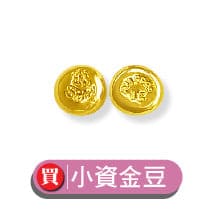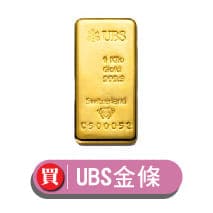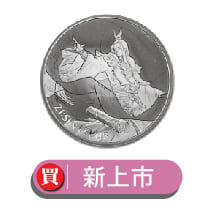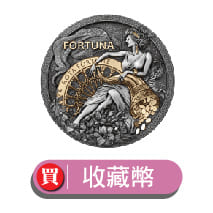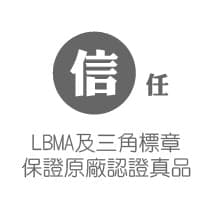2021/0421
中歐和東歐中央銀行正在購買黃金,理由是“全球經濟的快速結構性變化”-世界黃金協會
Central and Eastern European central banks are buying up gold, citing 'rapid structural changes in the global economy' – WGC
中歐和東歐中央銀行正在購買黃金,理由是“全球經濟的快速結構性變化”-世界黃金協會
Anna Golubova
Tuesday April 20, 2021 11:41
After several large gold purchases by Poland and Hungary, the Central and Eastern Europe region now accounts for 17% of total global central bank gold purchases over the last three years, according to the World Gold Council.
根據世界黃金協會(World Gold Council)的數據,在波蘭和匈牙利進行了幾次大規模的黃金購買之後,中歐和東歐地區現在佔過去三年全球中央銀行黃金購買總量的17%。
"Decisions to purchase gold were strategic in nature, taking into account the rapid structural changes in the global economy, such as shifts in the international financial system and global consequences of the pandemic," said Tatiana Fic, director of Central Banks and Public Policy at the World Gold Council.
“考慮到全球經濟的快速結構變化,例如國際金融體系的變化和大流行的全球後果,購買黃金的決定本質上是戰略性的,”中央銀行和公共政策部主管塔蒂亞娜·菲克(Tatiana Fic)說。世界黃金協會。
In March, Hungary's central bank tripled its gold reserves to a historic high of 94.5 tonnes. This comes after the country's 10-fold increase in gold holdings in Q4 of 2018.
3月,匈牙利中央銀行將其黃金儲備增加了兩倍,達到94.5噸的歷史高位。在此之前,該國在2018年第四季度增加了10倍的黃金持有量。
The next on WGC's list is Poland, which also increased its gold holdings dramatically over the last three years. The National Bank of Poland bought 25.7 tonnes in the second half of 2018, and then another 100 tonnes in the second quarter of 2019. The latter purchase is still the largest global single gold purchase of the last decade, noted Fic.
WGC名單上的下一個國家是波蘭,在過去三年中,波蘭的黃金持有量也大大增加。波蘭國家銀行在2018年下半年購買了25.7噸,然後在2019年第二季度又購買了100噸。Fic指出,後者的購買仍然是過去十年中全球最大的單一黃金購買量。
"The strategic decision by the NBP to more than double its reserves was driven by the bank's objective to diversify the geopolitical risk and strengthen the buffer protecting the country's financial stability," she wrote on Monday.
她週一在信中寫道:“ NBP將儲備增加一倍以上的戰略決定是由該銀行實現分散地緣政治風險並加強保護該國金融穩定的緩衝的目標驅動的。”
Serbia has also made headlines with its more gradual gold accumulation, as it added around 0.2 tonnes of gold per quarter since 2011. In 2019, the pace of purchases accelerated with a 9.2 tonnes acquisition in Q3 of 2019 and then another 3.5 tonnes in Q4 of 2020.
塞爾維亞也以其逐漸積累的黃金而成為頭條新聞,因為自2011年以來每季度增加了約0.2噸黃金。2019年,購買速度加快,2019年第三季度收購了9.2噸黃金,隨後在2020年第四季度又增加了3.5噸黃金。
"The key driver behind these purchases was to shore up the stability of the Serbian financial system during a time of uncertainty and to guard against the heightened risk of a global crisis," Fic said.
菲克說:“這些購買行為的主要推動力是在不確定時期支撐塞爾維亞金融體系的穩定,並防範全球危機加劇的風險。”
She added that the increased interest in gold from the Central and Eastern Europe region would not end here.
她補充說,中歐和東歐地區對黃金的興趣增加並沒有到此為止。
"NBP Governor Glapinski has recently announced that Poland may buy another 100 tonnes of gold over the next couple of years. Serbia, if it continues its policy of gradual acquisition of gold, may also continue adding small amounts of gold to its reserves. Thus, the CEE region may continue to be an important center for central bank gold activity in coming years."
“ NBP州長Glapinski最近宣布,波蘭可能在未來幾年內再購買100噸黃金。塞爾維亞如果繼續其逐步購買黃金的政策,也可能會繼續向其儲備中添加少量黃金。因此,在未來幾年,中東歐地區可能繼續成為央行黃金活動的重要中心。”
The COVID-19 pandemic will continue to be an important trigger for wanting more exposure to gold as the Central and Eastern European central banks look for protection.
隨著中歐和東歐中央銀行尋求保護,COVID-19大流行將繼續是希望更多地接觸黃金的重要誘因。
"The unprecedented response of monetary and fiscal policies to the pandemic has resulted in sharp increases in government debts and rising inflationary pressures, bringing to the fore the role of gold as a safe haven and a long-term store of value," Fic explained.
菲克解釋說:“貨幣和財政政策對大流行病的空前反應已導致政府債務急劇增加和通貨膨脹壓力上升,使黃金作為避風港和長期價值儲存的作用脫穎而出。”
By Anna Golubova
Shiny黃金白銀交易所
引用: Kitco News
中歐和東歐中央銀行正在購買黃金,理由是“全球經濟的快速結構性變化”-世界黃金協會
Anna Golubova
Tuesday April 20, 2021 11:41
After several large gold purchases by Poland and Hungary, the Central and Eastern Europe region now accounts for 17% of total global central bank gold purchases over the last three years, according to the World Gold Council.
根據世界黃金協會(World Gold Council)的數據,在波蘭和匈牙利進行了幾次大規模的黃金購買之後,中歐和東歐地區現在佔過去三年全球中央銀行黃金購買總量的17%。
"Decisions to purchase gold were strategic in nature, taking into account the rapid structural changes in the global economy, such as shifts in the international financial system and global consequences of the pandemic," said Tatiana Fic, director of Central Banks and Public Policy at the World Gold Council.
“考慮到全球經濟的快速結構變化,例如國際金融體系的變化和大流行的全球後果,購買黃金的決定本質上是戰略性的,”中央銀行和公共政策部主管塔蒂亞娜·菲克(Tatiana Fic)說。世界黃金協會。
In March, Hungary's central bank tripled its gold reserves to a historic high of 94.5 tonnes. This comes after the country's 10-fold increase in gold holdings in Q4 of 2018.
3月,匈牙利中央銀行將其黃金儲備增加了兩倍,達到94.5噸的歷史高位。在此之前,該國在2018年第四季度增加了10倍的黃金持有量。
The next on WGC's list is Poland, which also increased its gold holdings dramatically over the last three years. The National Bank of Poland bought 25.7 tonnes in the second half of 2018, and then another 100 tonnes in the second quarter of 2019. The latter purchase is still the largest global single gold purchase of the last decade, noted Fic.
WGC名單上的下一個國家是波蘭,在過去三年中,波蘭的黃金持有量也大大增加。波蘭國家銀行在2018年下半年購買了25.7噸,然後在2019年第二季度又購買了100噸。Fic指出,後者的購買仍然是過去十年中全球最大的單一黃金購買量。
"The strategic decision by the NBP to more than double its reserves was driven by the bank's objective to diversify the geopolitical risk and strengthen the buffer protecting the country's financial stability," she wrote on Monday.
她週一在信中寫道:“ NBP將儲備增加一倍以上的戰略決定是由該銀行實現分散地緣政治風險並加強保護該國金融穩定的緩衝的目標驅動的。”
Serbia has also made headlines with its more gradual gold accumulation, as it added around 0.2 tonnes of gold per quarter since 2011. In 2019, the pace of purchases accelerated with a 9.2 tonnes acquisition in Q3 of 2019 and then another 3.5 tonnes in Q4 of 2020.
塞爾維亞也以其逐漸積累的黃金而成為頭條新聞,因為自2011年以來每季度增加了約0.2噸黃金。2019年,購買速度加快,2019年第三季度收購了9.2噸黃金,隨後在2020年第四季度又增加了3.5噸黃金。
"The key driver behind these purchases was to shore up the stability of the Serbian financial system during a time of uncertainty and to guard against the heightened risk of a global crisis," Fic said.
菲克說:“這些購買行為的主要推動力是在不確定時期支撐塞爾維亞金融體系的穩定,並防範全球危機加劇的風險。”
She added that the increased interest in gold from the Central and Eastern Europe region would not end here.
她補充說,中歐和東歐地區對黃金的興趣增加並沒有到此為止。
"NBP Governor Glapinski has recently announced that Poland may buy another 100 tonnes of gold over the next couple of years. Serbia, if it continues its policy of gradual acquisition of gold, may also continue adding small amounts of gold to its reserves. Thus, the CEE region may continue to be an important center for central bank gold activity in coming years."
“ NBP州長Glapinski最近宣布,波蘭可能在未來幾年內再購買100噸黃金。塞爾維亞如果繼續其逐步購買黃金的政策,也可能會繼續向其儲備中添加少量黃金。因此,在未來幾年,中東歐地區可能繼續成為央行黃金活動的重要中心。”
The COVID-19 pandemic will continue to be an important trigger for wanting more exposure to gold as the Central and Eastern European central banks look for protection.
隨著中歐和東歐中央銀行尋求保護,COVID-19大流行將繼續是希望更多地接觸黃金的重要誘因。
"The unprecedented response of monetary and fiscal policies to the pandemic has resulted in sharp increases in government debts and rising inflationary pressures, bringing to the fore the role of gold as a safe haven and a long-term store of value," Fic explained.
菲克解釋說:“貨幣和財政政策對大流行病的空前反應已導致政府債務急劇增加和通貨膨脹壓力上升,使黃金作為避風港和長期價值儲存的作用脫穎而出。”
By Anna Golubova
Shiny黃金白銀交易所
引用: Kitco News

